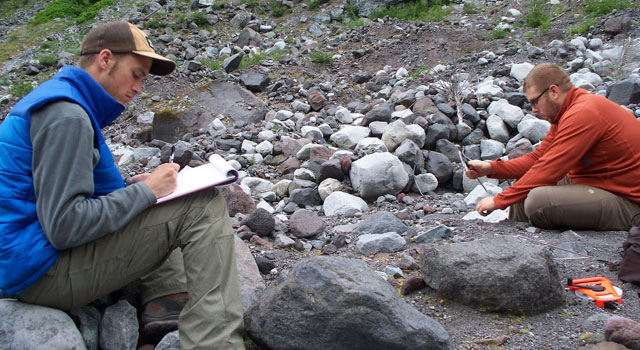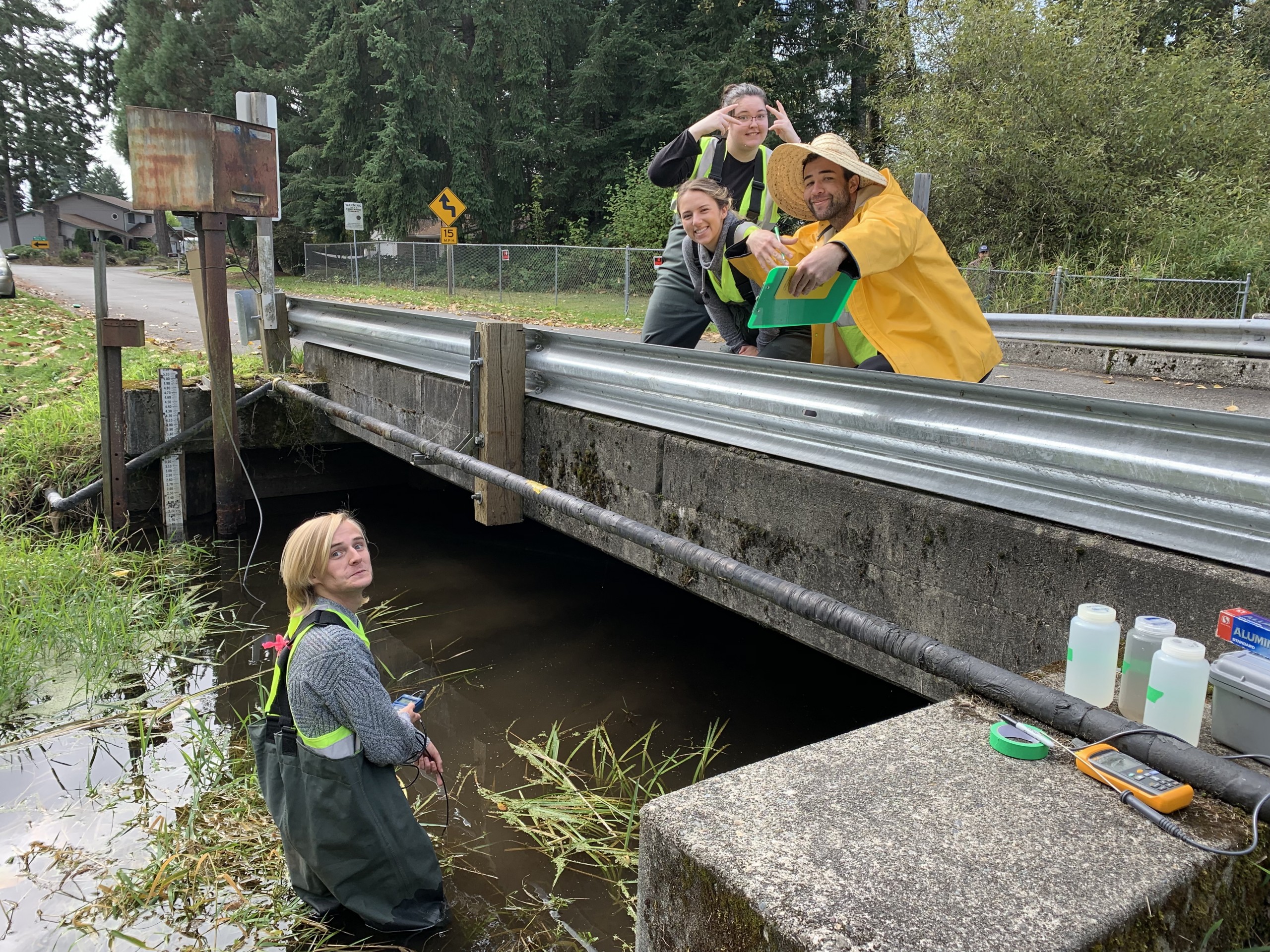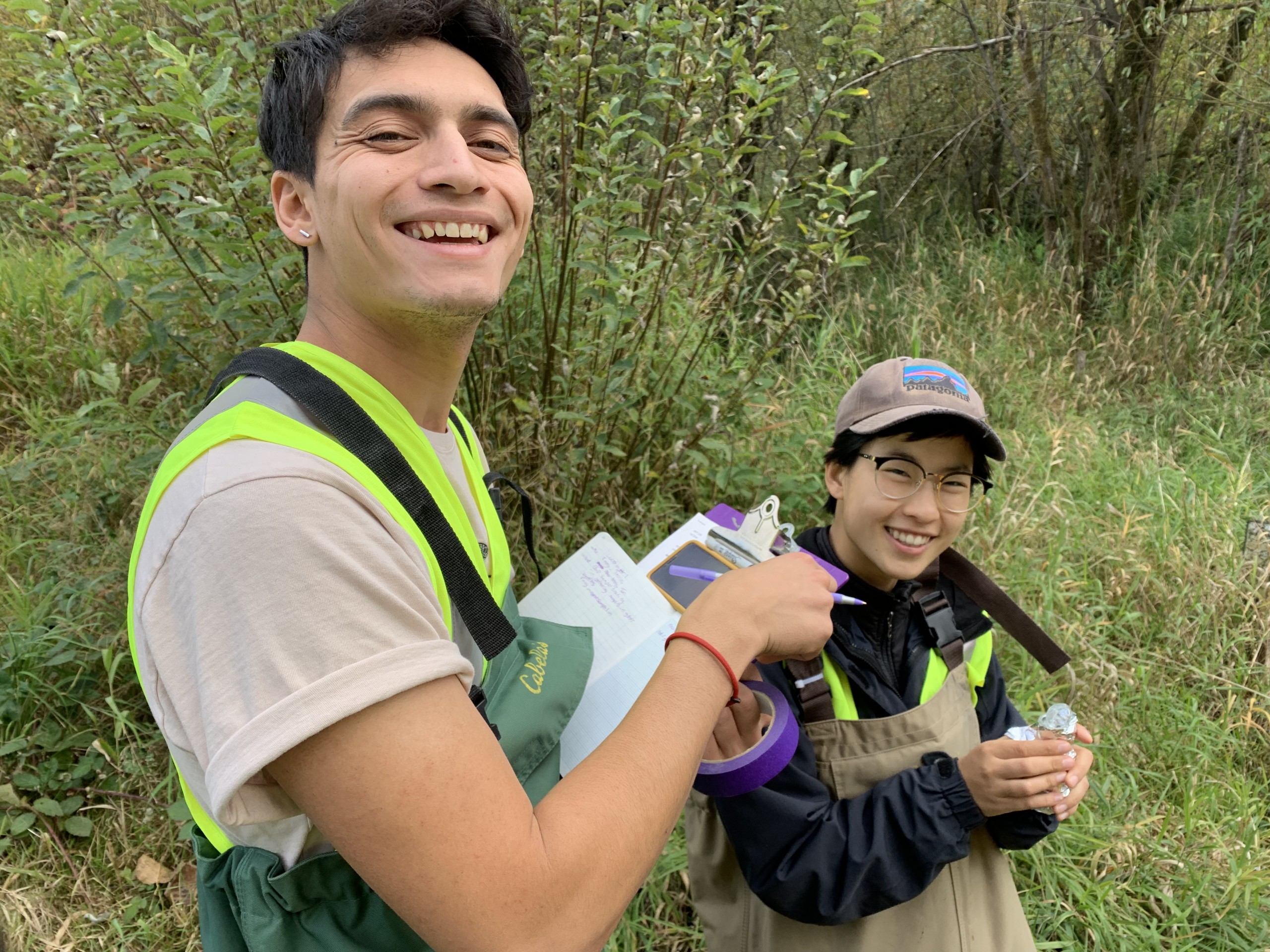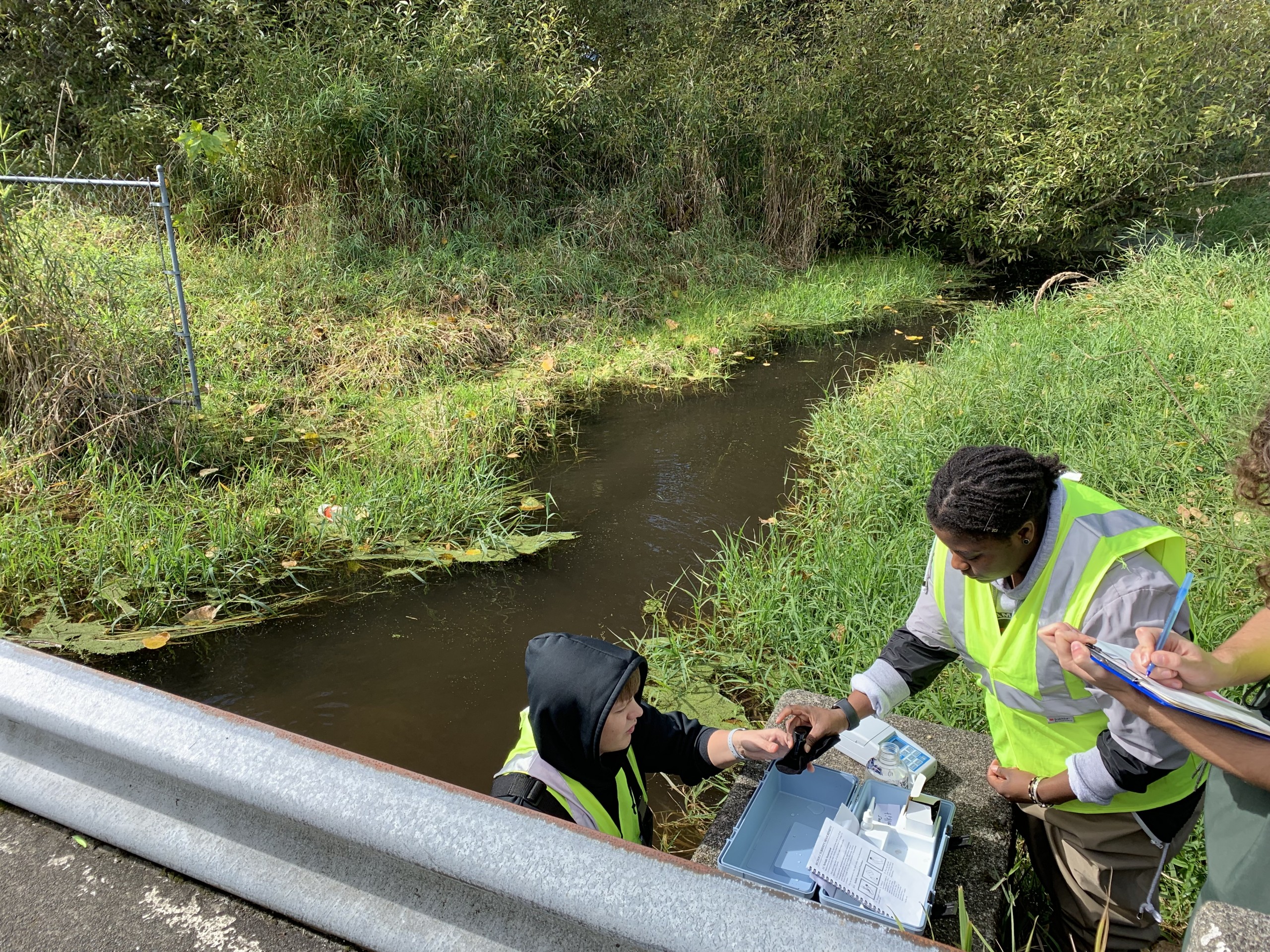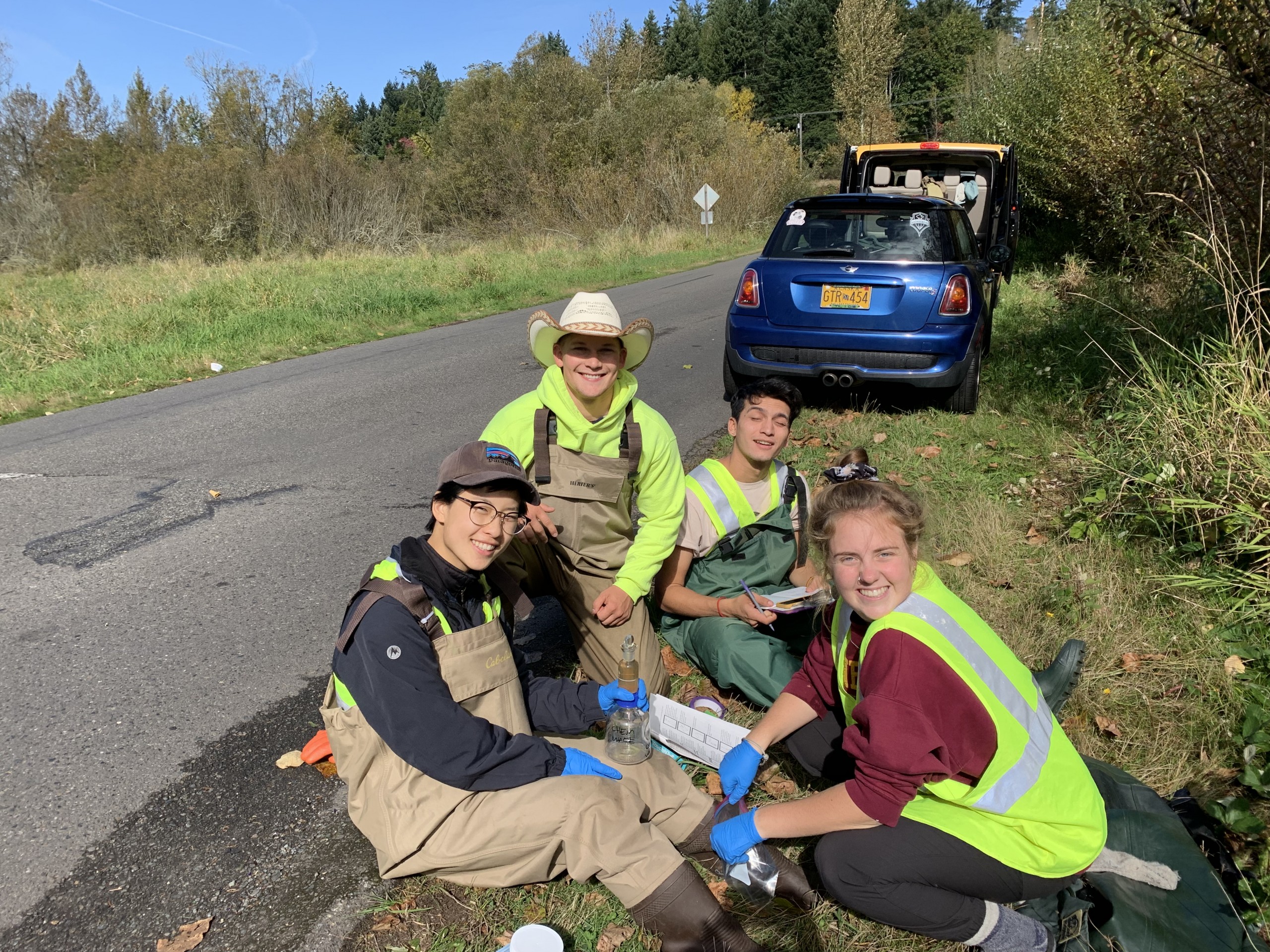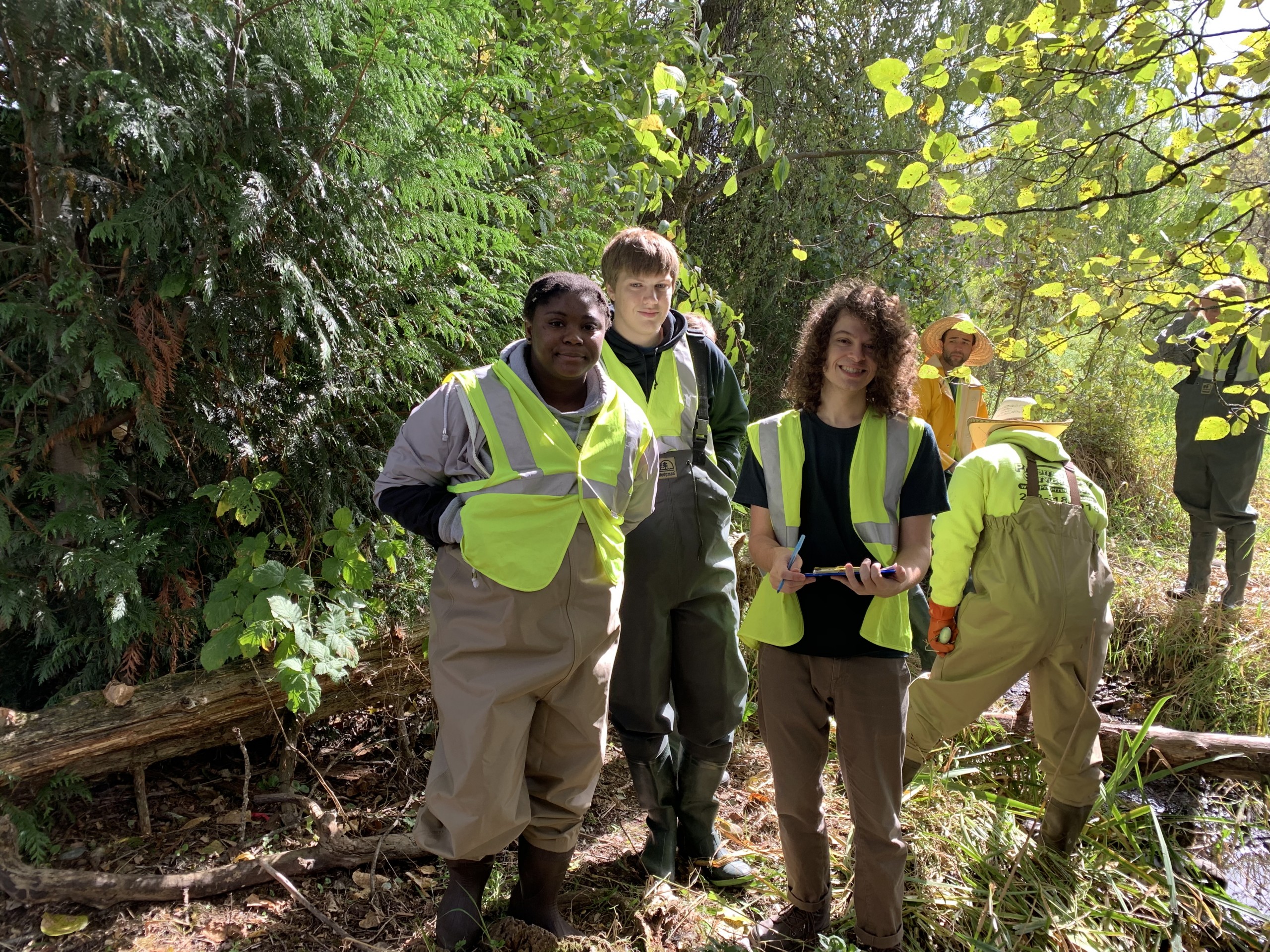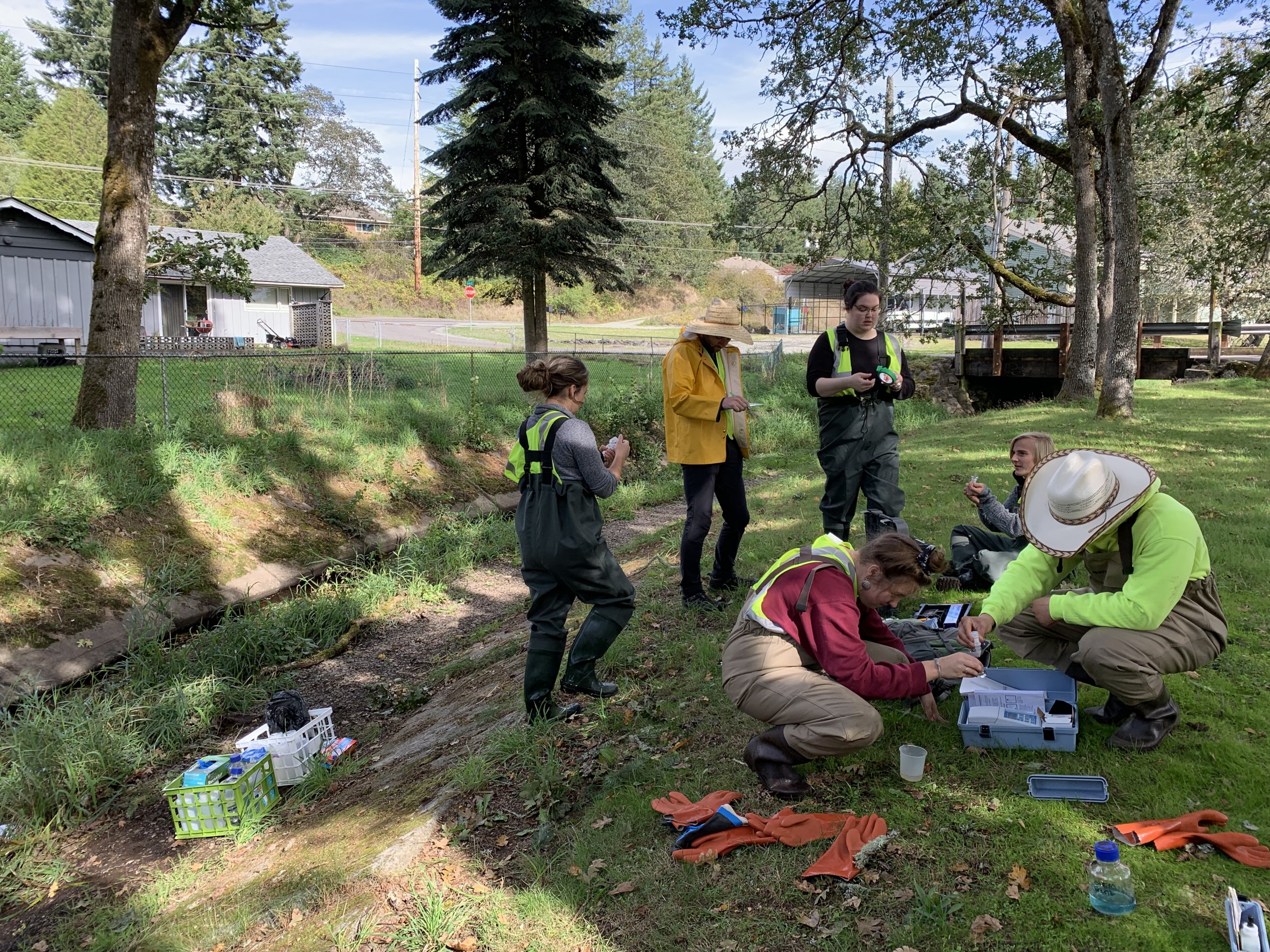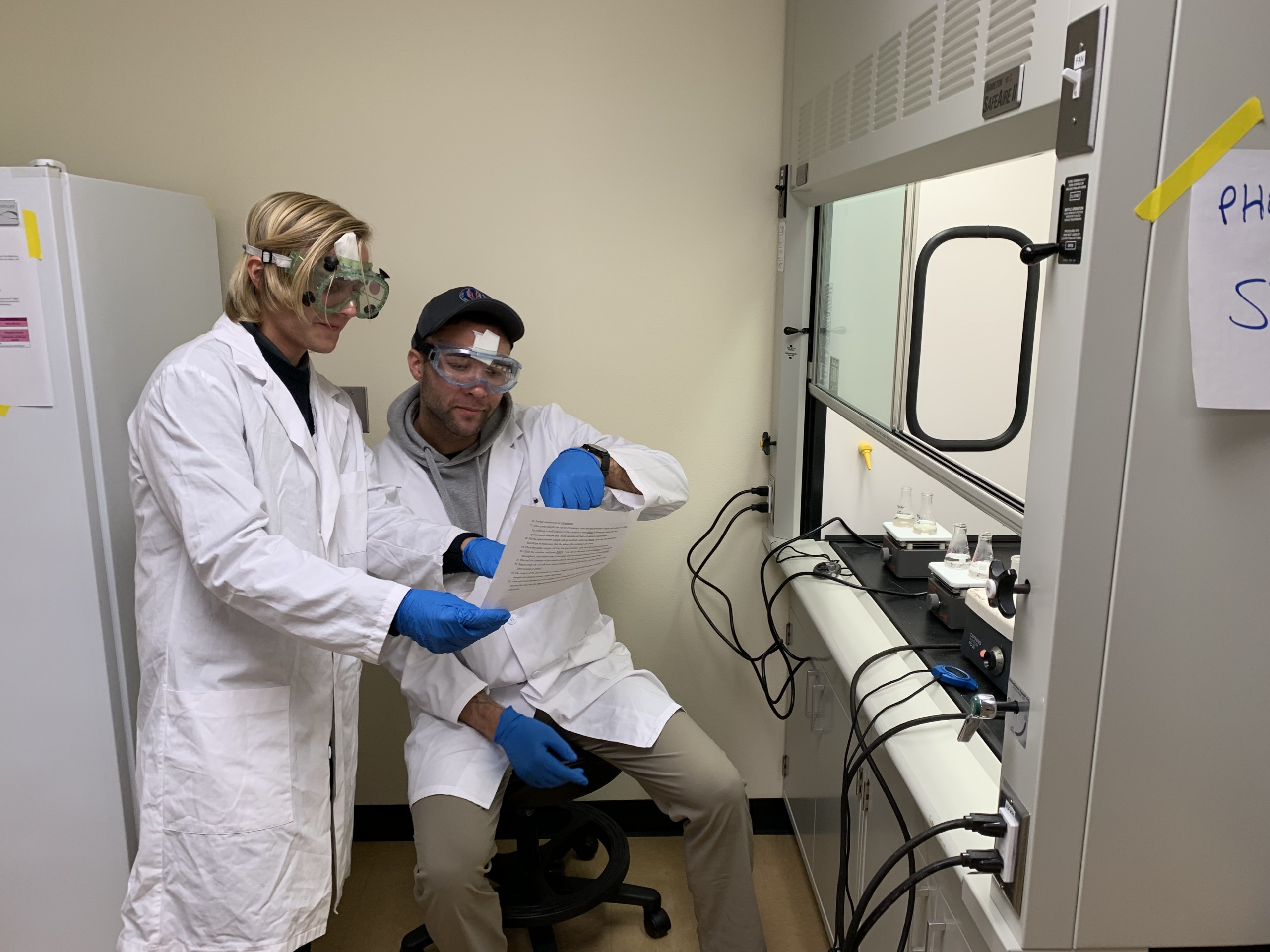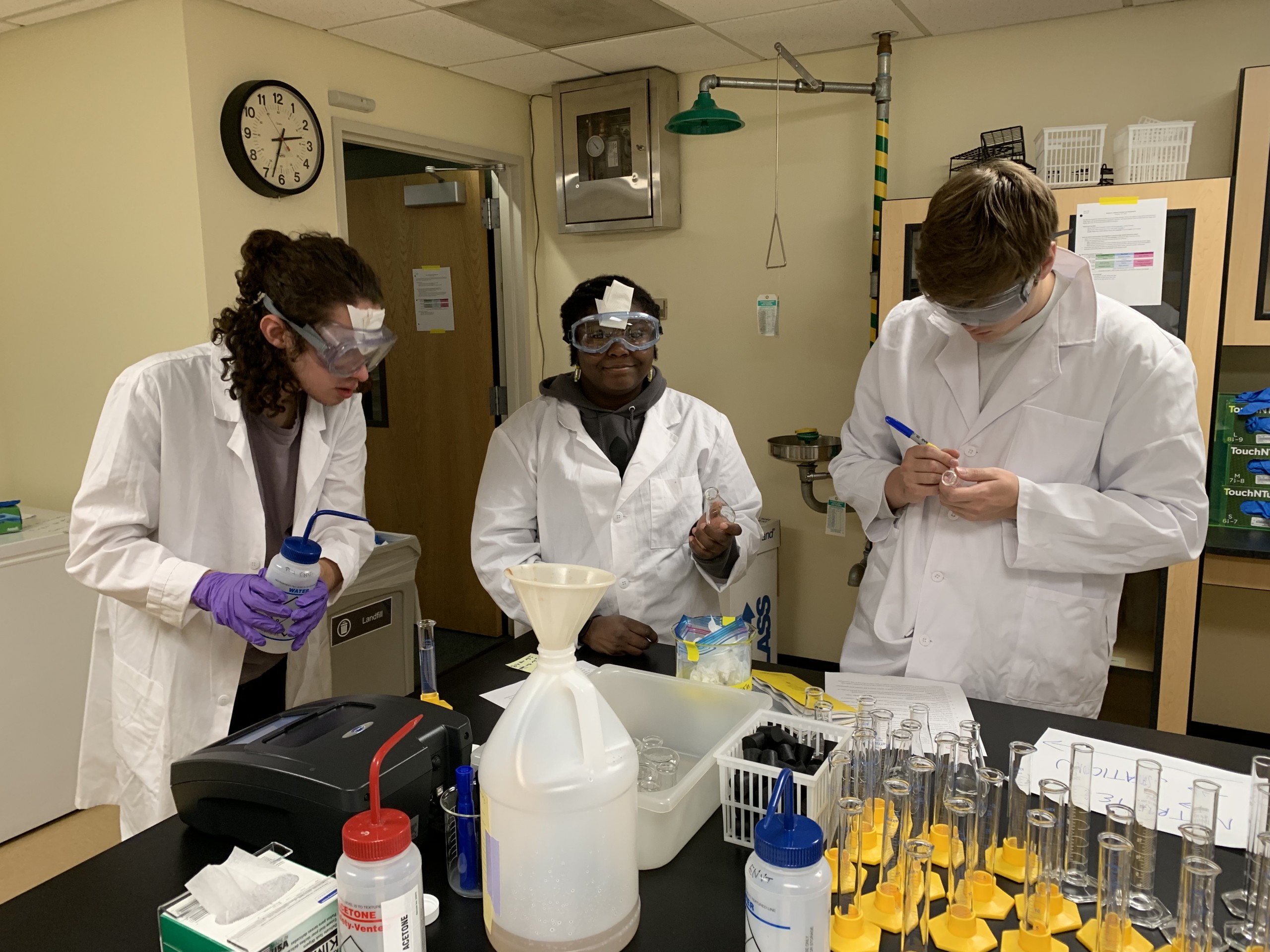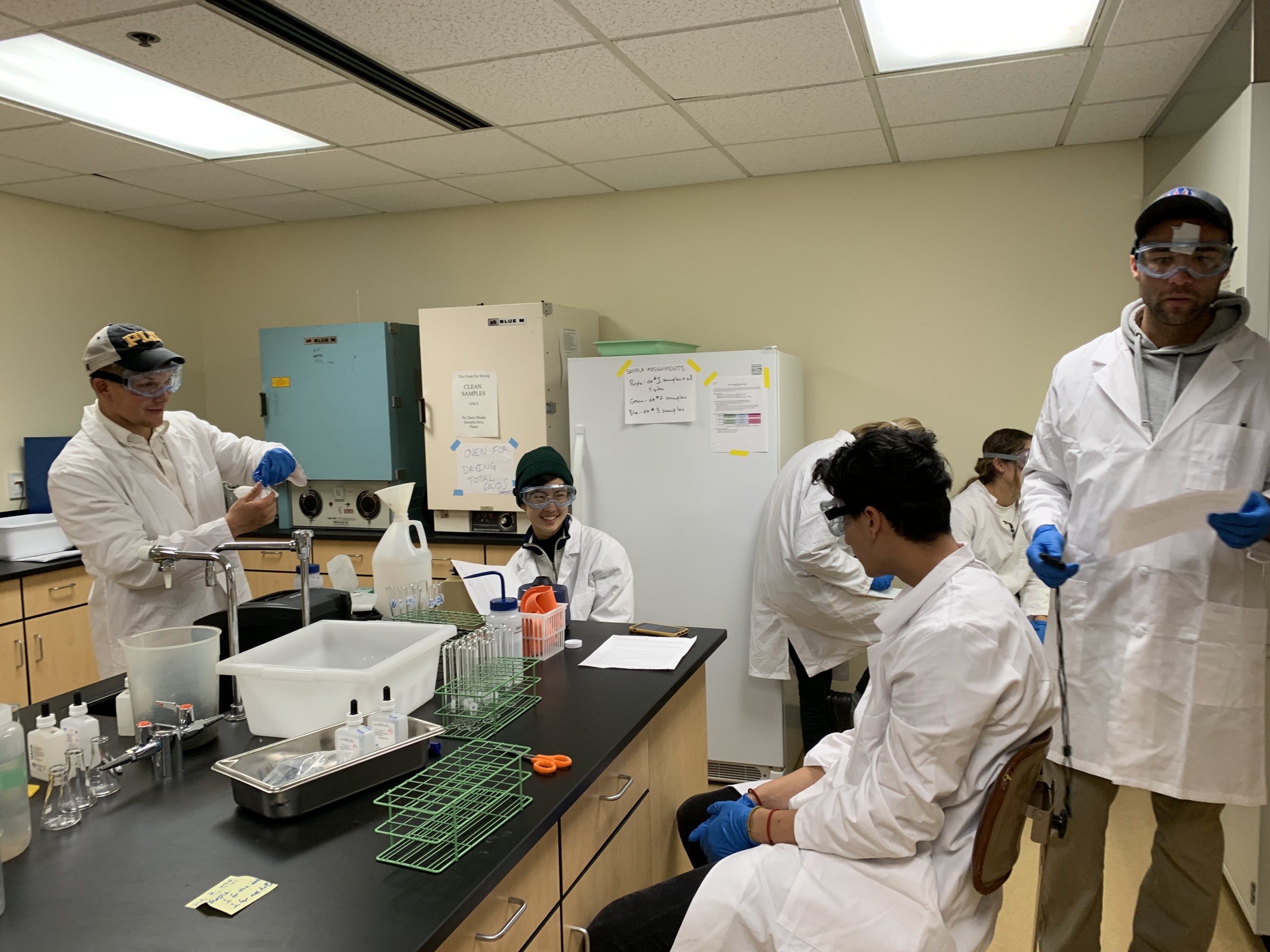PLU environmental studies students chart the challenges facing the nearby Clover Creek Watershed
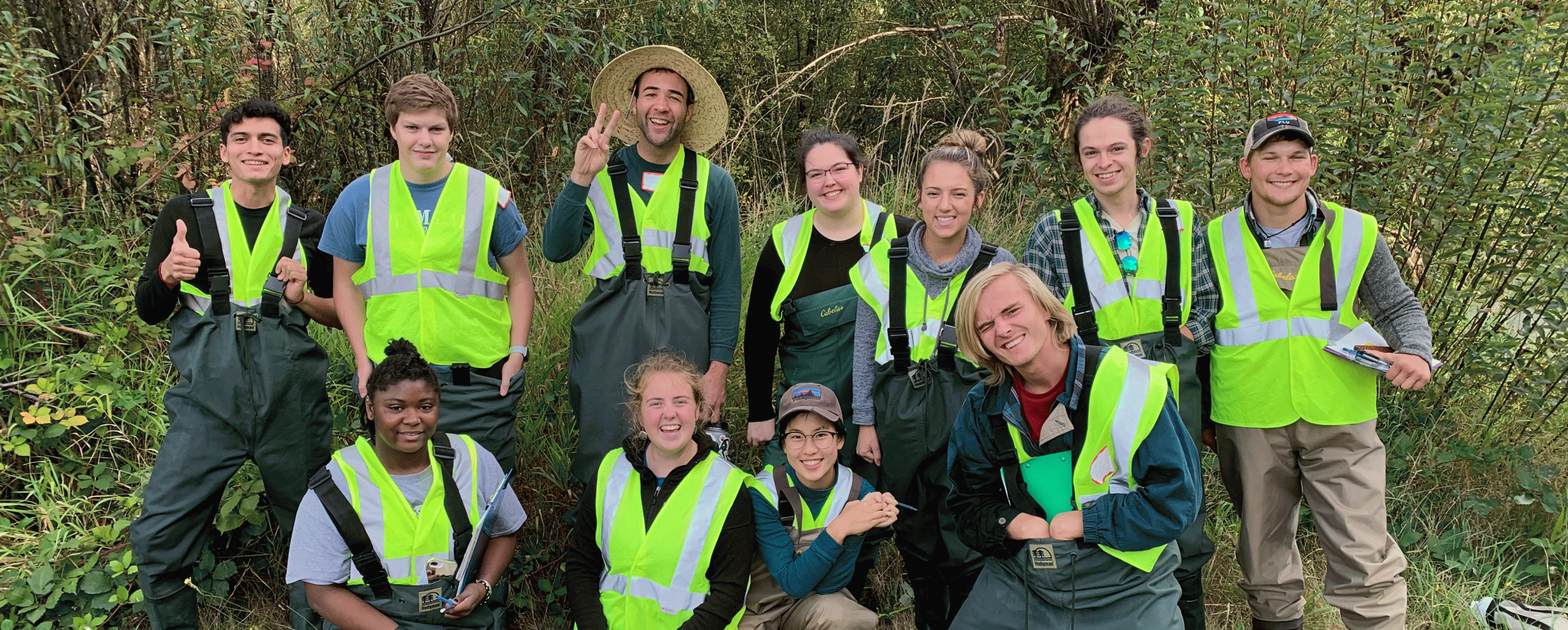
Image: PLU students in the Fall 2019 Environmental Studies 350 course take a quick photo break during a water sample collection excursion. (Photos courtesy of Claire Todd.)
By Zach Powers '10
Marketing & Communications
At Pacific Lutheran University, natural science research can lead students all the way to Antarctica and back again. For environmental studies majors, there’s also important data to collect and analyze within a stone’s throw of the university’s campus.
Clover Creek flows 14 miles through Parkland, Joint Base Lewis-McChord (JBLM) and Lakewood before emptying into Lake Steilacoom. Its watershed spans 74 square miles. Much of the watershed’s stream system is impaired by low levels of dissolved oxygen, warm water temperatures and bacteria.
State and county agencies are working with a coalition of local stakeholders to study and improve the health of the Clover Creek watershed. Pacific Lutheran University students and faculty members are part of that coalition.
PLU students in “Environmental Studies 350: Environmental Methods of Investigation” collect and analyze water samples from multiple locations across the Clover Creek Watershed. The course was designed when the environmental studies minor was established (now a major and minor), and over 25 years worth of data about the watershed has been collected by the many cohorts of students since.
Claire Todd, an award-winning professor of geosciences and environmental studies, currently teaches Environmental Studies 350.
How do students go about conducting this research?
They collect water, and biologic and geologic samples from different locations in the watershed. They analyze these samples in PLU’s Rieke Science Center — identifying organisms that live in the creek and measuring the chemical characteristics of the water collected. All of this is accomplished in our infamous Friday lab sessions!
Does the process differ in the spring and fall semesters?
Seasonal changes in the watershed have a big impact on what students do in the fall class versus the spring class. In the fall, many locations in Clover Creek are completely dry, and this past fall one of our typical sampling locations had a toxic algae advisory. In some spring semesters, sampling locations may have too much water, making it unsafe for students to enter the stream. So our sampling plan is always changing!
Can you go into a bit more detail about the samples being collected?
Students measure fecal coliform, nitrates, phosphates and other components in their water samples. They also collect and identify benthic macroinvertebrates — spineless organisms that live in the streambed — which provide a longer-term view of watershed health because the organisms have spent at least part of their lifecycle in the stream.
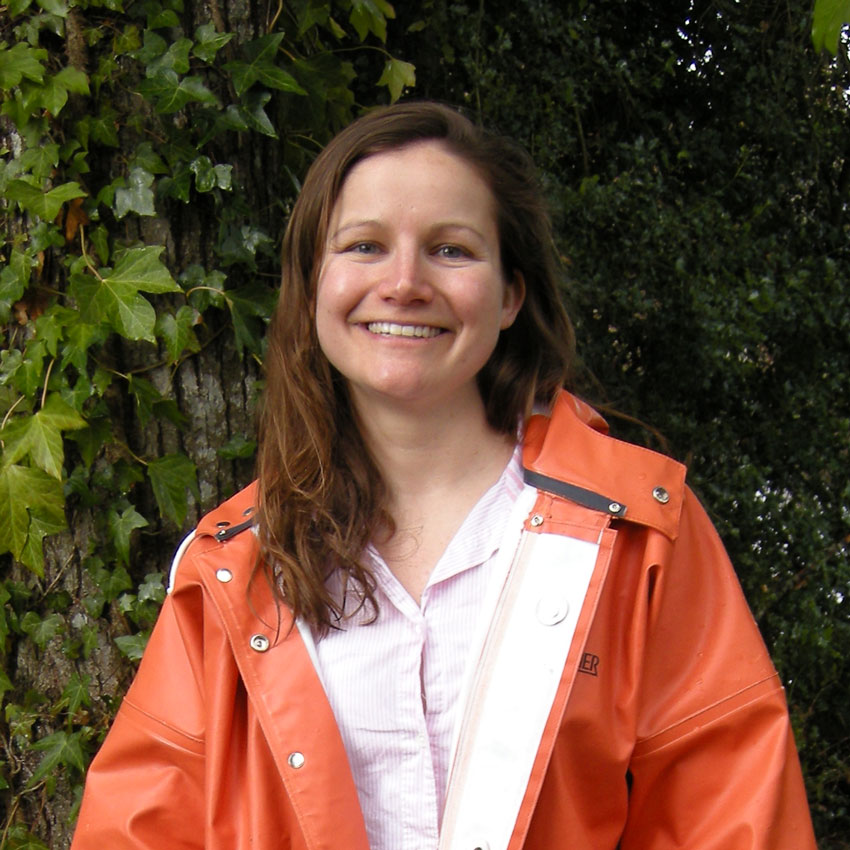
Students are now able to compare their measurements with results from past classes. What has that revealed over time?
Over the years, our research has shown the impacts of water runoff from an increasingly paved watershed, such that rainwater is directed to the stream over impermeable, polluted surfaces rather than infiltrating into the soil. Our number of samples and sample locations is limited due to the constraints of our class timeslot and semester schedule, but even this sparse dataset reveals the challenges of maintaining watershed health in the face of ongoing population growth and urbanization.
How do government agencies and community stakeholders collaborate with students in this work?
Each semester, county researchers, planners and coordinators as well as local environmental stewards and activists help to lead a watershed tour for our students. Community groups — such as members of the watershed council and Forterra (a conservation group) — support us by providing access to sample sites, coming to our presentations, organizing a Watershed Issues Forum at PLU, and providing feedback on student work. The program is also indebted to Al Schmauder, a long-time community activist who shares the history of activism in the watershed with students, and often leads our watershed tour himself.
How does this course fit into the upper-level coursework required for environmental studies majors?
All environmental studies majors and minors take this class. Environmental studies majors continue on to our senior coursework which focuses on interdisciplinary research methods. For their senior capstone projects, students design and implement their own interdisciplinary research approaches working with two faculty mentors from different departments on campus.



